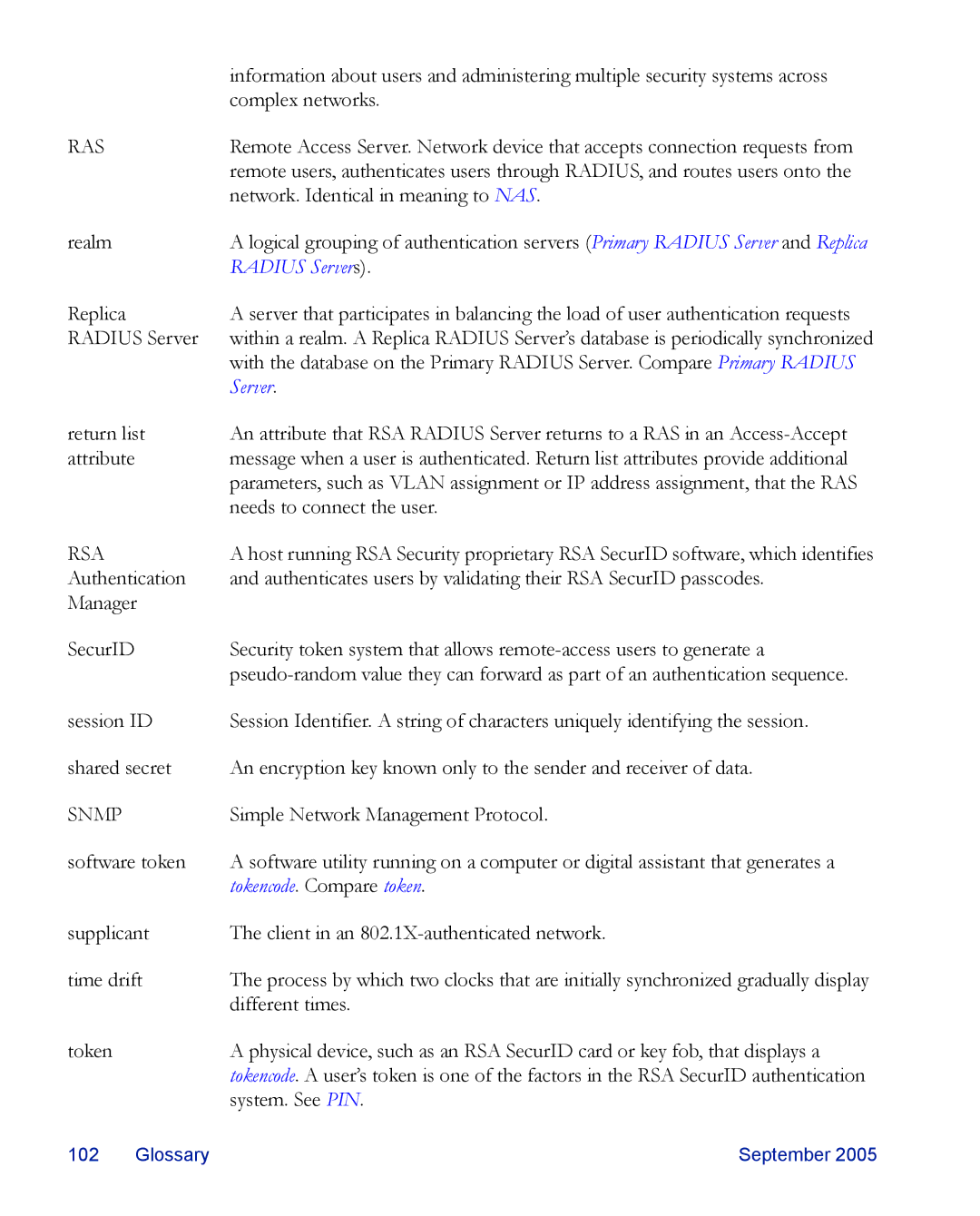| information about users and administering multiple security systems across |
| complex networks. |
RAS | Remote Access Server. Network device that accepts connection requests from |
| remote users, authenticates users through RADIUS, and routes users onto the |
| network. Identical in meaning to NAS. |
realm | A logical grouping of authentication servers (Primary RADIUS Server and Replica |
| RADIUS Servers). |
Replica | A server that participates in balancing the load of user authentication requests |
RADIUS Server | within a realm. A Replica RADIUS Server’s database is periodically synchronized |
| with the database on the Primary RADIUS Server. Compare Primary RADIUS |
| Server. |
return list | An attribute that RSA RADIUS Server returns to a RAS in an |
attribute | message when a user is authenticated. Return list attributes provide additional |
| parameters, such as VLAN assignment or IP address assignment, that the RAS |
| needs to connect the user. |
RSA | A host running RSA Security proprietary RSA SecurID software, which identifies |
Authentication | and authenticates users by validating their RSA SecurID passcodes. |
Manager |
|
SecurID | Security token system that allows |
| |
session ID | Session Identifier. A string of characters uniquely identifying the session. |
shared secret | An encryption key known only to the sender and receiver of data. |
SNMP | Simple Network Management Protocol. |
software token | A software utility running on a computer or digital assistant that generates a |
| tokencode. Compare token. |
supplicant | The client in an |
time drift | The process by which two clocks that are initially synchronized gradually display |
| different times. |
token | A physical device, such as an RSA SecurID card or key fob, that displays a |
| tokencode. A user’s token is one of the factors in the RSA SecurID authentication |
| system. See PIN. |
102 | Glossary | September 2005 |
